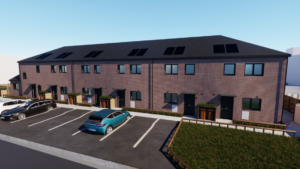New figures reveal social housing decline in London
 Only one-fifth of London households now live in social homes, according to a new report.
Only one-fifth of London households now live in social homes, according to a new report.
The 2018 Housing in London report shows how the Right to Buy scheme has seen more than 300,000 homes sold by councils in London since it was introduced in 1980, with just one in five having been replaced.
As a result, social housing has gone from being the capital’s largest housing tenure in the 1980s to the lowest in 2017, accounting for just 21% of London’s households.
It has also meant the numbers of private rented households with children have more than doubled in a decade, from 140,000 in 2007 to 320,000 in 2017.
The report also reveals that London’s overall home ownership rate has also fallen in recent decades, with stark differences for different age groups.
In 1990, around half of London households headed by a 25-34 year old owned their own home, with around half of the households headed by someone over 65 owning too. But in less than 30 years this story has changed dramatically – the proportion of young people owning their own home has fallen to around a quarter, whilst amongst the over-65s the opposite has been the case, with the proportion having risen to almost three-quarters.
The report has prompted London mayor Sadiq Khan to reiterate calls for stamp duty receipts to be devolved to London to fund much-needed affordable homes.
‘London’s housing landscape has worsened dramatically over the past 30 years, and we now risk a whole generation of Londoners being blocked from enjoying the benefits of a good quality, genuinely affordable home,’ said the London Mayor.
‘This data shows that accessing social housing or homeownership is now a pipe-dream for too many. London’s rocketing house prices mean we are contributing billions of pounds in stamp duty to the Treasury, when we could be using it to build new social rented and other genuinely affordable homes. Control of stamp duty has been devolved to Scotland and Wales and it’s vital that Ministers devolve it to London too, which has a population larger than Scotland and Wales combined.’
The data also highlights how the capital is lagging behind major international cities whose housing growth has outstripped their population growth over the last five years, including Singapore, Tokyo, and Paris.
In contrast, London’s population grew 1.4% a year over the last five years, but its housing growth rate was only 0.8% a year. All of these other cities have far greater control over their tax revenues than London.
Terrie Alafat, chief executive of Chartered Institute of Housing, commented: ‘This report makes it clear that young people are paying the price for our national failure to build the genuinely affordable homes we so desperately need, particularly in London. We simply cannot go on with the system we have or the implications for future generations will be every bit as significant as the impact of Brexit.
‘For many people on lower incomes, social rent is the only truly affordable option – but as we can see from this report, thousands of people are being denied access because of the increasing shortage of social housing. It is vital that the government thinks creatively about how to shift investment so that we can build more of the right homes, in the right places, at the right places.’















